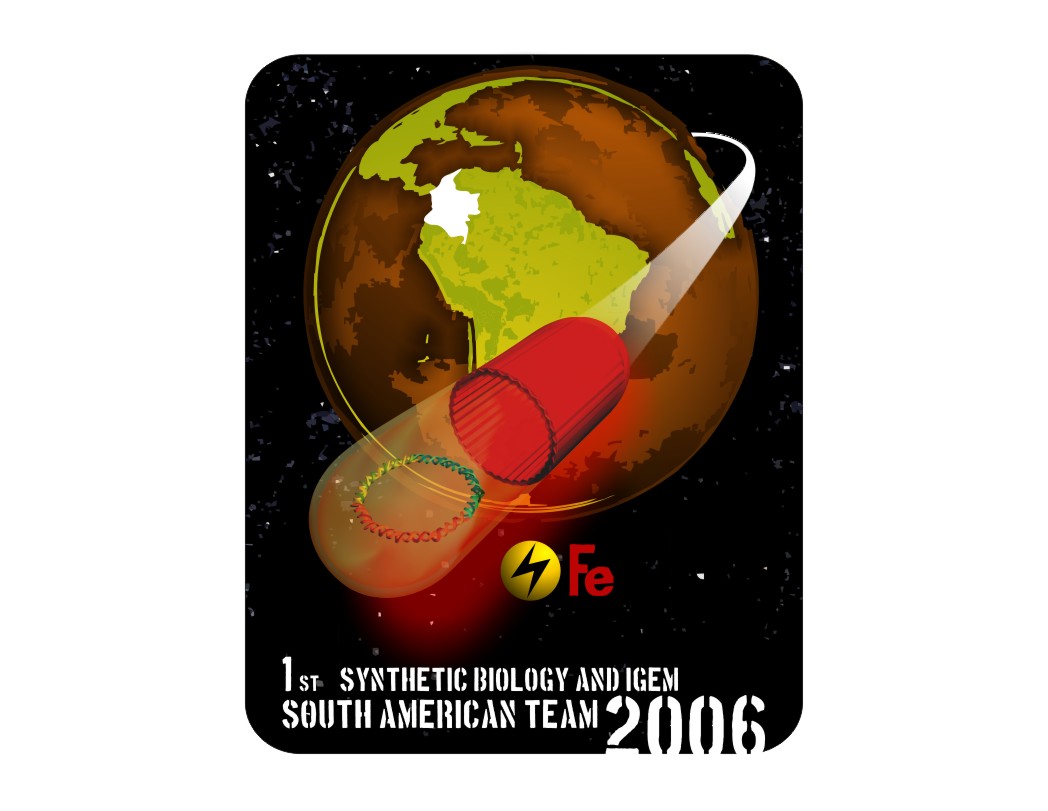IGEM 2006 Project
From 2007.igem.org
A Microbial Biosensor Device for Iron Detection under UV Irradiation
 For our IGEM 2006 project the Colombian-IGEM team developed a microbial biosensor device for iron detection under UV irradiation using synthetic biology. The results of this research work have been selected for publication (now in print) on the 2007 IET Synthetic Biology Journal. Below you will find the abstract of the article and if interested in learning more about what we accomplished las year or for the complete article, please visit the IET Synth. Bio. website or the [http://parts2.mit.edu/wiki/index.php/Latin_America_2006 Colombian IGEM 2006 project wiki].
For our IGEM 2006 project the Colombian-IGEM team developed a microbial biosensor device for iron detection under UV irradiation using synthetic biology. The results of this research work have been selected for publication (now in print) on the 2007 IET Synthetic Biology Journal. Below you will find the abstract of the article and if interested in learning more about what we accomplished las year or for the complete article, please visit the IET Synth. Bio. website or the [http://parts2.mit.edu/wiki/index.php/Latin_America_2006 Colombian IGEM 2006 project wiki].
Abstract: Biosensors are useful molecular and/or cellular tools that allow detection of the presence of different metals including iron (FeII/III) and other compounds, even at detection levels beyond the limits of conventional methods. Bacterial cells were transformed with pSB1A3 containing promoters PI and PII from Acidithiobacillus ferrooxidans rus operon and a Lacl regulated device coding a monomeric red fluorescent protein (mRFP1). An MIT BioBrick containing different parts was used to assemble the machine. The designed device was standardised for its specific detection using iron ions and/or IPTG as inputs and MRFP1 as output. Transformed cells were grown under the presence of UV radiation (360nm) or fluorescent light, and different FeII concentrations (0, 1, 50, 100 ppm). The response of the biosensor was measured by the expression of reporter protein, DNA fluorescence and/or concentration, bacterial growth, and redox potential (mV/pH) of the bacterial culture. The machine was correctly assembled and transformed in E. coli, which was observed through agarose gel electrophoresis of the plasmid and the total DNA. A ~3.506 kbp band was obtained in each case. The viability of the machine was also confirmed by the detection according to the iron concentration, and fluorescence of the reporter protein. The aim of the project was to use synthetic biology in order to develop a microbial biosensor machine assembling new protein promoter sequences for iron uptake, and some standard parts (BBa_J04450) from MIT BioBricks made in Escherichia coli DH5α strain (provided by the International Center for Tropical Agriculture, Colombia) to detect ion metals such as FeII, under a UV light environment.